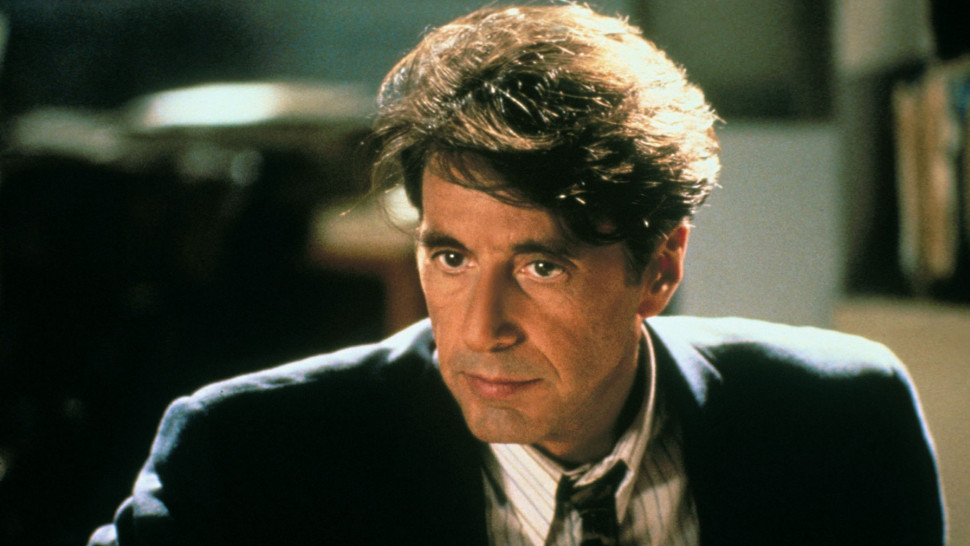
When Al Pacino first emerged onto the big screen in the 1970s, acting was never the same. His unmistakable presence and energy opened a window to a whole new style of performance.
Through his vulnerability and unique blend of internal angst and volatile expressiveness, Pacino became an anti-Hollywood star. He has starred in many modern classics, but he has excelled equally in a handful of under-the-radar films.
1. The Panic in Needle Park (1971)
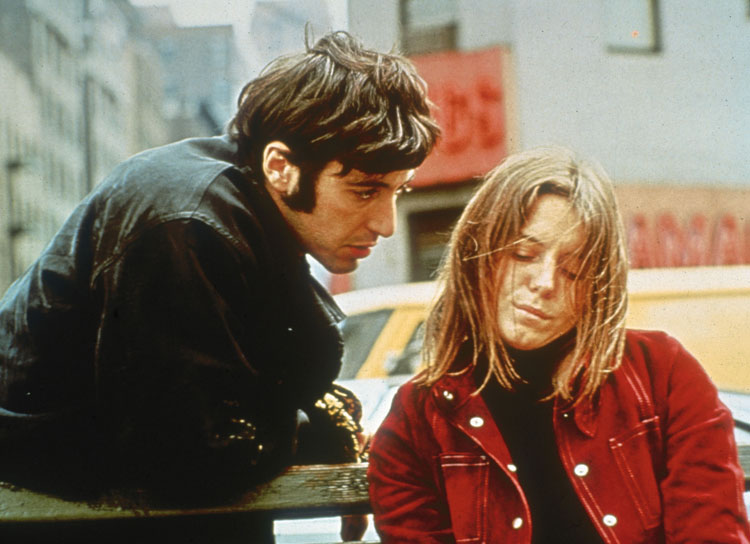
The performance that caught the eye of Francis Ford Coppola during the casting process of The Godfather, Al Pacino’s debut as a leading man set the template for what the actor would bless the big screen with for 50 years. An essential text to decrypting what New Hollywood’s style and message was about in the decade, The Panic in Needle Park is an unpleasant and harrowing viewing experience but is inherently mesmerizing in its blunt display of raw anguish and decay.
The Panic in Needle Park, a film by Jerry Schatzberg, is a loose portrayal of heroin addicts in New York City and the disturbing love story between Bobby (Pacino) and Helen (Kitty Winn). Schatzberg’s neorealism can be grating for some viewers, with his camera constantly moving and inevitably settling into a suffocating close-up shot. At times, the film leans too heavily into misery and poverty porn, which undermines the rebellious tendencies of the story.
The Panic in Needle Park is working best when it is walking the line between documentary-like portrayals of an underbelly in America and grimy exploitation. In either mold, Pacino excels as Bobby. Despite him playing someone in a completely different sociological bracket, his performance planted the seeds for Michael Corleone. He can be sweet in one instance and haunted and menacing in another. Even though, in retrospect, his presence stands out in a cast of minor actors, Pacino is fully immersed in the film’s setting and Schatzberg’s hazy direction. The history of Al Pacino cannot be told without the impact of The Panic in Needle Park.
2. Scarecrow (1973)
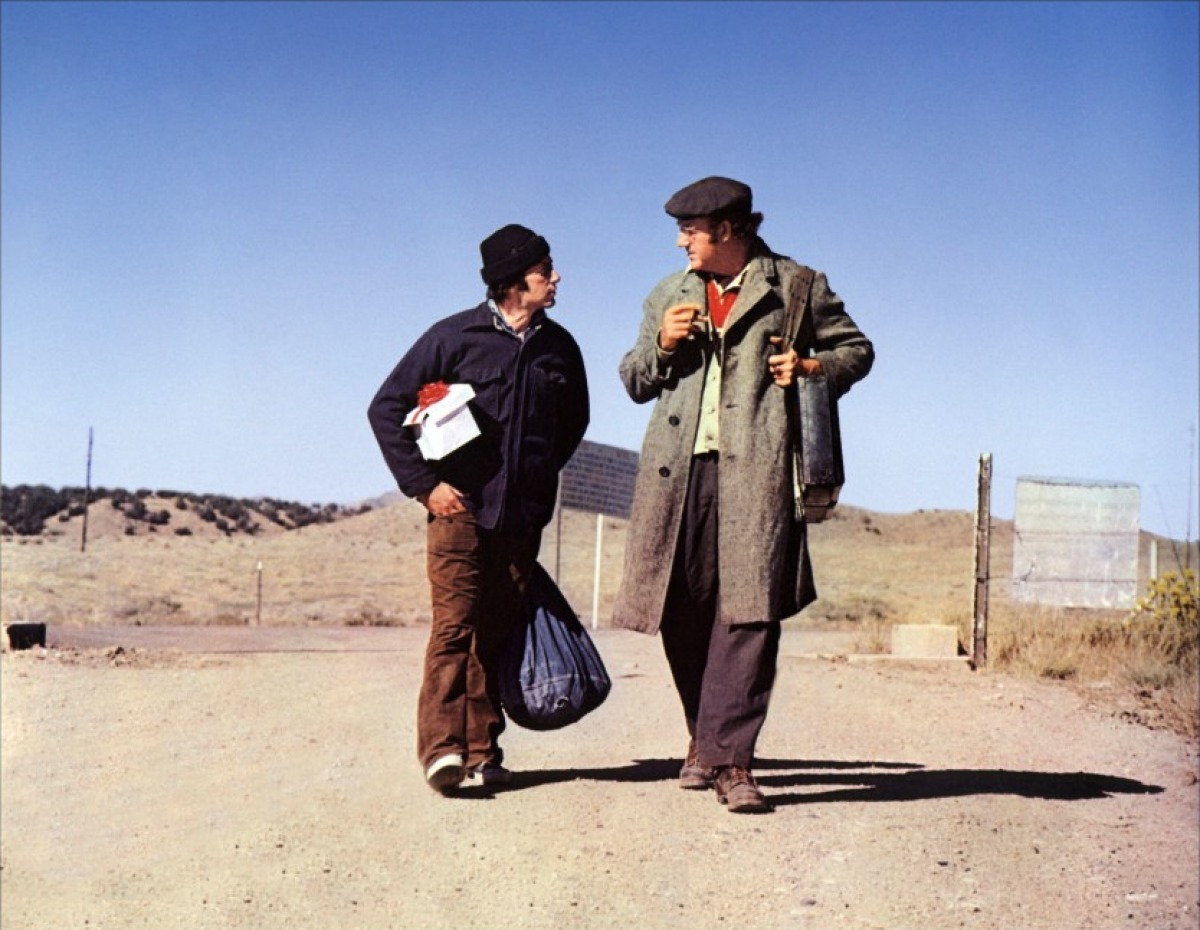
Reuniting with Panic in Needle Park director Jerry Schatzberg, Al Pacino found glory in a film he starred with another screen legend and slightly older contemporary, Gene Hackman. In 1973, Scarecrow was awarded the coveted Palme d’Or at the Cannes Film Festival. The film, which is off-kilter, downbeat, and meditative in the most New Hollywood fashion, enlightens viewers about the kind of quiet and reserved performance that Pacino is capable of.
Staying true to Schatzberg’s free-flowing vision of lost souls, Scarecrow follows the journey of an ex-con drifter, Max (Hackman), and a homeless ex-sailor, Lion (Pacino), traveling east so that the latter can see his newborn child for the first time. The plot is more or less superfluous, as the film is concerned about the livelihood and relationship between Max and Lion. Just like all character studies about complex figures in the ‘70s, Scarecrow does not insist upon finding hard solutions and definitive verdicts on these characters. Audiences are not entirely sure if Max and Lion, despite their exchanged wisdom, learn anything from each other.
On the surface, Schatzberg captures the open road with a picturesque ambiance, but the grainy visual look of the film signals the downbeat American mindset of the time. The film is gloomy about the state of humanity and society without insisting upon itself. Pacino’s performance is top-notch, brilliantly subverting the bombastic persona that would define his screen image in the future. His easy-going innocence, expertly juxtaposed with Max’s cynical eye, serves to make the inevitability of his personal failures harsher. Pacino is so dialed into his performance that he seems to only be capable of existing in this universe, but in the same breath, is the ideal archetype of the lonely man longing for a beautiful friendship that Scarecrow realizes.
3. Cruising (1980)
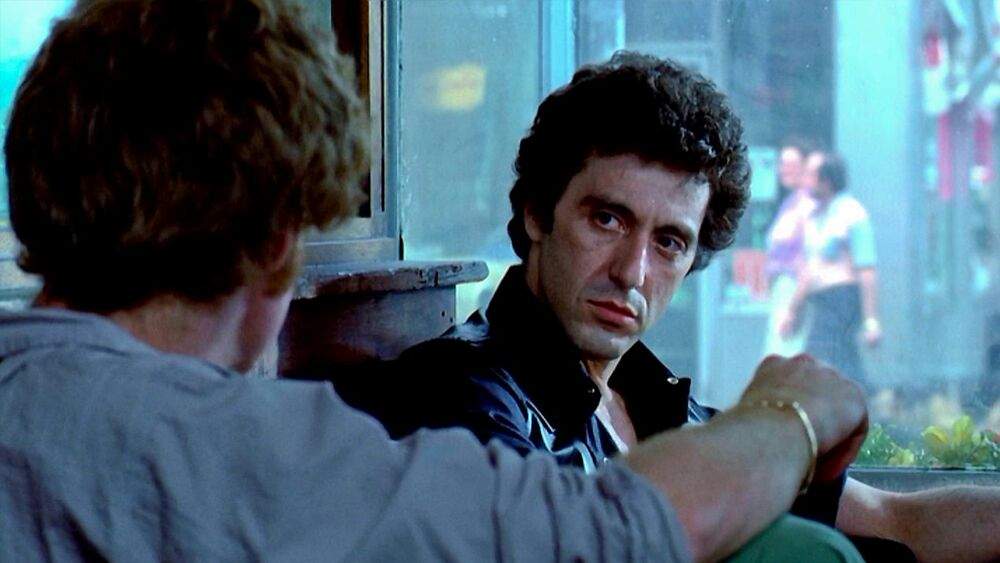
The collaboration between Al Pacino and director William Friedkin had the potential to be glorious. By the time they convened in 1980, both had accomplished their finest work, and the industry had altered dramatically. However, this did not prevent the creation of Cruising, a bizarre film that is equally enjoyable and sluggish. It is one of those “one needs to see it in order to believe it” kind of films.
In this sleazy detective story, a police detective, Steve Burns (Pacino), goes undercover to catch a serial killer preying on gay men in the underground S&M culture in New York City. Even though it is comfortable as a genre piece, Cruising is at its worst when it is dedicated to being a police procedural. Nothing flashes from the screen in these instances, including Pacino’s performance. When Friedkin is allowed to flourish his depravity and kickstart his signature unnerving tension, the film is quite undeniable. Some of its views on homosexuality are understandably dated, but for a studio film in 1980, the film expresses surprising nuance.
Altogether, Cruising is effective as a film with unmistakable grimy vibes. Friedkin’s direction and visual palette are unappealing from the outside, but it gets viewers sucked in fast and it never ceases to relent. Pacino is dialed into Friedkin’s frantic energy. The actor supplies the screen with his reliable sweat-fueled paranoia and chaos. As his career moved into the valleys of the ‘80s, and through his comeback in the ‘90s, Pacino gradually took less risky projects like Cruising, which is a shame for all film fans, despite all of its imperfections.
4. Sea of Love (1989)
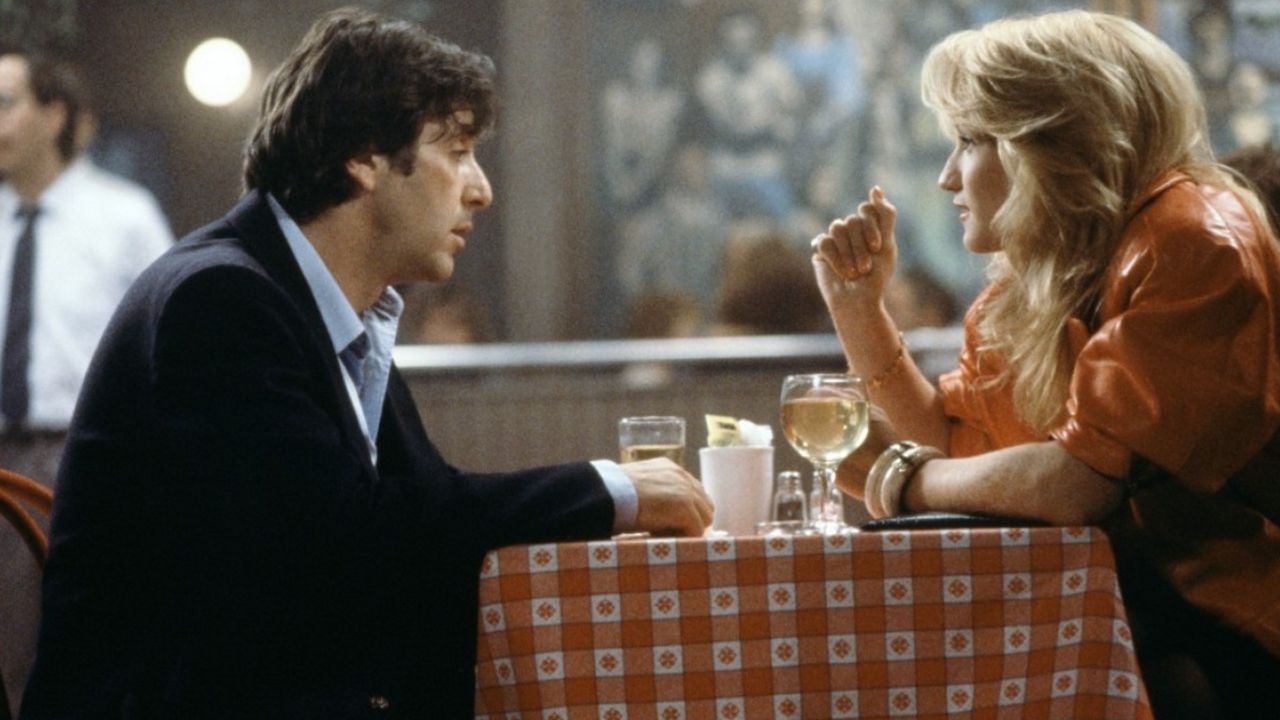
Following his rise to stardom and universal acclaim as one of America’s great actors, Al Pacino disappeared from the limelight in the 1980s. The industry altered dramatically, as the kind of films made for the actor were being produced at a less frequent rate. In this downtime, he was heavily invested in theater production. In 1989, he returned to his usual glory with Sea of Love, a mystery thriller/perverse romance.
The film centers around a detective, Frank Keller (Pacino) investigating a series of murders who inevitably falls in love with a woman, Helen (Ellen Barkin), who may be the culprit. Sea of Love, directed by Harold Becker, despite its genre template, is an adult drama at its heart, concerning itself with adult issues and anxieties like aging. The tone of the film is a curious cross of classic film noir and the underground sleaze of the ‘80s, acting as a true companion piece to Cruising. The forbidden romance between Frank and Helen is undeniably intriguing, even when it purposefully feels unnatural.
While directed firmly, the film could be elevated to a whole new level with a filmmaker with a defined slickness and grit. Pacino is as solid as ever in his comeback picture, raising the stakes of every beat of the story with his sense of dramatism. At a meta-level, Pacino’s absence is beneficial to the weight of the film. Through appearance alone, he has aged considerably since his heyday in the ‘70s. His exhausted facial expressions and body language add to the particular vibe of Sea of Love.
5. Dick Tracy (1990)
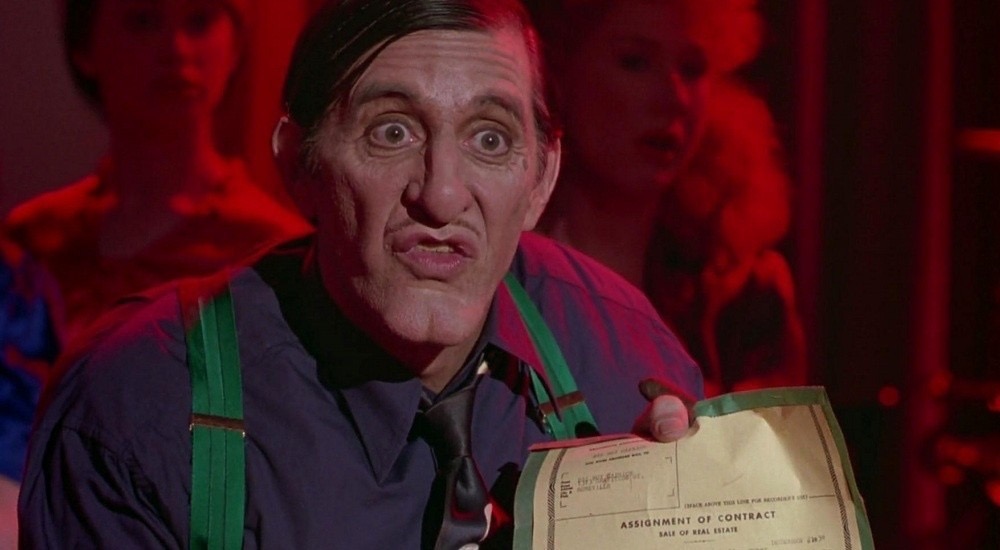
In one of the strangest career decisions in recent Hollywood history, megastar Warren Beatty decided to adapt a series of comic strips into a film, but stay so devoted to its pulpy origins that it amounted to a film that looks like nothing that ever came before it. Dick Tracy appeared to be way above the curious intrigue of Beatty, but the mysterious alluring quality of the property created a flawed, but endlessly enjoyable and fascinating film filled with a murderer’s row of great actors, including an unleashed turn by Al Pacino.
Dick Tracy follows the titular detective’s (Beatty) twisted romance with Breathless Mahoney (Madonna) and his battle with the mob led by Big Boy Caprice (Pacino). Plotting and the functional narrative flow are laughably superfluous in Beatty’s film. Truthfully, this is not a problem, because the film unabashedly favors style over substance. Fortunately, Dick Tracy is highly stylized, with every shot and artificial set looking like a masterpiece. Between the comedic banter, chaotic gun fights, and musical numbers, Beatty is having the time of his life directing this film.
While Beatty’s performance is purposefully stiff, everyone else around him is giving their 100%, accompanied by flashy suits and highly expressive makeup, and prosthetic work. If only every film based upon comic books and IP had an ounce of Dick Tracy’s style. At the heart of the film’s unflinching mania in a supporting role is Pacino, who earned an Oscar nomination for his work. His portrayal of a cartoonish, but vicious mobster is a fitting twist on his iconic role as Michael Corleone. Caprice is charismatic even amid the freakish makeup and prosthetics. Gracefulness might not be the selling point of Dick Tracy, nor the entirety of Pacino’s performance, but in some cases, giving one’s all is part of the charm of cinema.